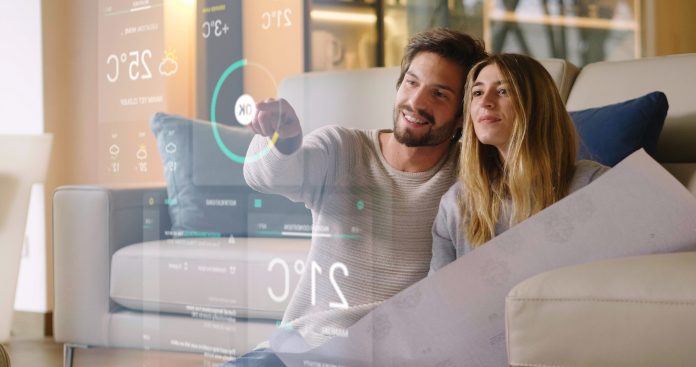Smart technology is critical to helping social housing providers offer better, safer, greener homes for residents, says Civica’s Michelle Tyler
The recent global pandemic proved how much communities can pull together in a crisis. Digital technology played a vital role in this: established tech, such as mobile apps and video conferencing, to new and emerging ones, such as artificial intelligence, connected devices and machine learning.
In our more digitally savvy post-pandemic world, these same technologies can help social housing providers meet the rapidly changing expectations of residents. Our recent Greener Homes, Connected Communities, Changing Landscape revealed a clear majority of sector leaders in agreement, with more than 90% believing that AI-assisted technologies, connected devices and machine learning would increase in importance in future.
With a housing sector that faces constant new pressures – from long waiting lists to safety and security, the growing cost of living crisis and the challenge to meet net zero goals, assistance from inexpensive and readily available smart technology could make a big impact.
Secure data is crucial to drive digital transformation in the social housing sector
Connected devices have a key role in helping drive digital transformation in our social housing sector. Housing providers can use them to see opportunities for earlier intervention for those tenants who need extra help, while also identifying variations in service use to optimise costs. With housing staff already working around the clock to help tenants, this automation and smart tech will help free up frontline workers to focus on customers and services which require more personal contact.
Access to secure, reliable data is a crucial component of this. Data helps to connect the dots and build better housing services. The good news is that housing providers already have all this data to hand, with 78% of leaders confirming in our report that the quality of their data and processing is good. Steps need to be taken to ensure this data is better shared between systems and organisations to prevent issues for residents and their properties before they happen.
How can connected devices help us make better informed decisions?
We’ve really just started to explore how connected devices can help us make better informed decisions in the future. Our latest Perspectives* report, Connect to the future, showed many positive ways these technologies are already helping across the housing sector. Elderly or more vulnerable residents, for example, can have connected sensors around their home which will automatically send information about their movement patterns or if they’ve taken their scheduled medication – and raise the alarm if a change in pattern is detected.
We can improve safety in the home by more accurately monitoring humidity, temperature and CO2 levels. Devices can also help us make better predictions for future housing needs by using information to provide early alerts and optimise maintenance. This can also save money and time for housing providers. Smart home appliances such as boilers can send data which, combined with analytics, predict need for maintenance, avoiding costly routine and invasive inspections. As we face an ever-increasing cost of living crisis, it’s crucial to help residents and landlords better predict the cost of energy use and aim to both reduce fuel costs and improve efficiency.
Smart tech can give residents a louder voice to improve experience
Resident voice – and improved listening – is also a major issue for housing providers. Connected devices will play a crucial role here. We can improve the resident experience by adding smart tech, such as an Amazon Alexa, to properties so residents can remain in contact and get 24/7 advice and information.
Smart connected devices are obviously just one area where technology is transforming the housing sector. Other areas such as automated housing systems and customer portals will be key to build the single view of a resident and their housing needs. While advances in building modelling and digital twins have the potential to make housing organisations more effective at delivering greater outcomes for residents. They could increase safety, help people reduce bills and improve transparency between organisations and residents by showing people exactly what’s happening in their building in real time.
This combined technology approach will bring numerous benefits for the housing sector in embracing these connections – helping to deliver smarter, safer and greener homes.
Michelle Tyler

Managing director, social housing
Civica














